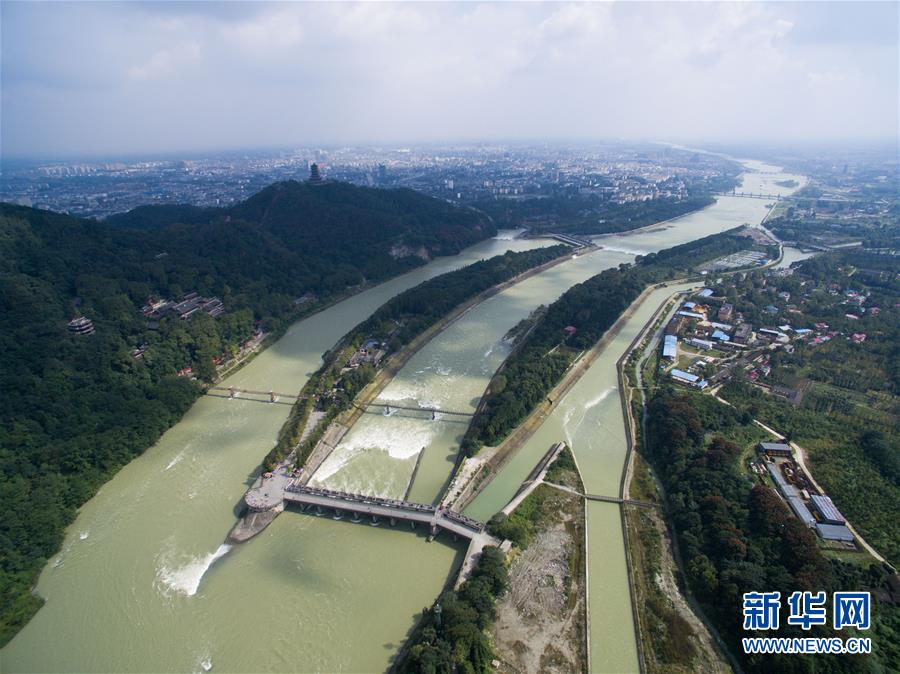
(The Dujiangyan Irrigation System. Photo: Xinhua)
China’s four historical irrigation and drainage systems -- the Dujiangyan Irrigation System, Jiangxiyan Irrigation system, Lingqu Canal and Changqu Canal -- have successfully been added to the World Heritage Irrigation Structures list at the 69th meeting of International Executive Council (IEC) held at Saskatoon, Canada on August 14, 2018.
The World Heritage Irrigation Structures, designed to recognize historical irrigation structures in the same way as the World Heritage Sites approved by UNESCO, was initiated in 2012, including both old operational structures as well as those of an archival value.
The Dujiangyan irrigation system, located in southwest China's Sichuan Province, is an ecological engineering feat originally constructed around 256 BC which produced comprehensive benefits in flood control, irrigation, water transport and general water consumption.
Built over 2,250 years ago, it now irrigates around 668,700 hectares of farmland, according to the data published on the UNESCO.
Built in 214 BC, Lingqu Canal that covers 4,000 hectares of farmland is a major irrigation structure in southern Guangxi Zhuang Autonomous Region, connecting the basins of the Yangtze River and Pearl River.The Jiangxiyan Canal in eastern Zhejiang Province, consisting of Jiang and Xi dams, was built in the 14th century and is still in use.Changqu Canal, also known as Baiqi Canal, is a 48km long irrigation structure in central Hubei Province.


